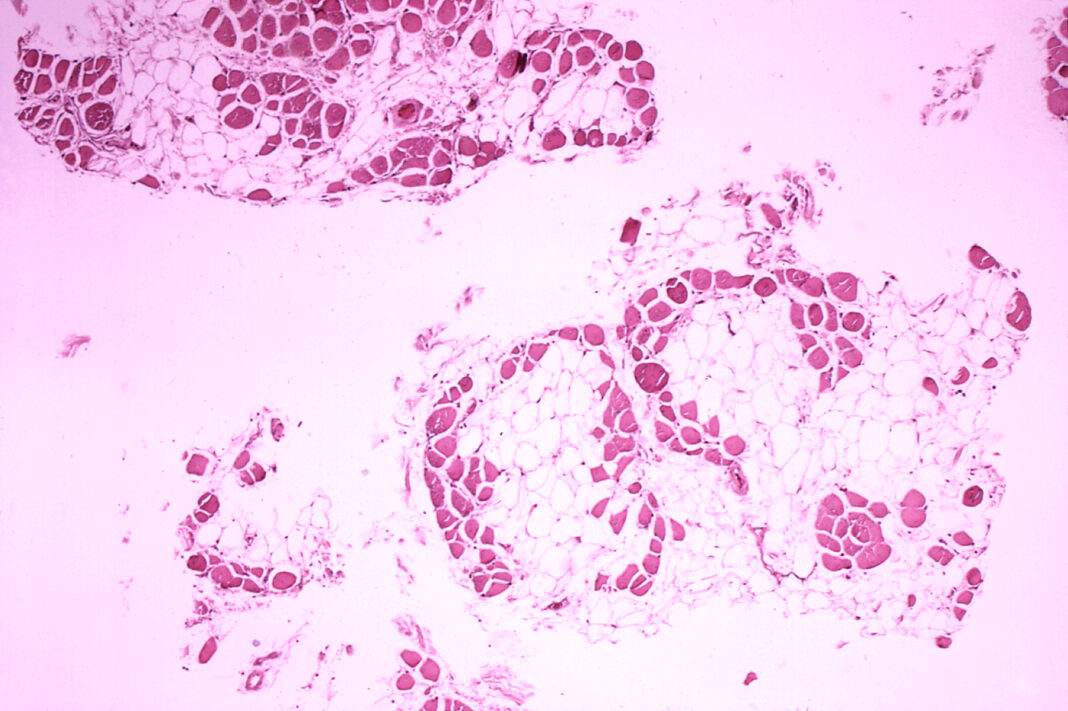A new study published in the Proceedings of the National Academy of Sciences of the United States of America mentioned that some investigators have advanced a novel strategy for the treatment of a genetic disorder called Duchenne muscular dystrophy (DMD). This fatal disease is usually characterized by advanced muscle weakness and degeneration because of major modifications in a protein termed dystrophin that enables keeping the muscle cells intact.
DMD affects seven of every 100,000 individuals — generally boys. These patients manifest several mutations in dystrophin, the largest known human gene. Dystrophin comprises 79 exons or sections. The absence of one such exon prevents the body from producing the necessary protein, and the muscles subsequently degenerate.
At present, there is no treatment for Duchenne muscular dystrophy. However, a novel class of medications uses a method named “exon skipping”. This process overshadows the missing exons, thus enabling the body to skip over the impaired instructions and generate the necessary proteins for recreating the muscle tissues.
A team of investigators directed by Toshifumi Yokota, Ph.D, from the Department of Medical Genetics, the University of Alberta in Edmonton piloted trials with the use of immortalized patient myotubes (growing skeletal fibers having a tubular appearance). The novel synthetic drug was also tested in mice. They found signs of dystrophin production, muscle building, and improved heart function. Findings from their experiments demonstrated that targeting five exons could help skipping exons 45 to 55. Yokota mentioned that each of the formerly created exon-skipping molecules has successfully treated not more than 10% of the patients with Duchenne muscular dystrophy. This can be attributed to the presence of dissimilar mutations to their exons in diverse locations inside the gene. Thus, the research team attempted to skip over 11 exons together, with the aim of providing a cure to roughly 45% of the patients.
The research sheds light on the process to enhance exon 51 skipping by using DG9, a peptide. The therapy improved the restoration of dystrophin protein and muscle function in a mouse model of the disease. This novel strategy procedure of exon skipping appears favorable because it uses particular oligomers (a special molecule that consists of a few similar or identical repeating units ) that help the cells to synthesize a smaller but moderately functional dystrophin protein in the affected patients.
The US Food and Drug Administration has already approved four treatments based on exon skipping to treat Duchenne muscular dystrophy. However, the cocktail drug awaits further toxicology analysis and regulatory stages prior to its use in clinical trials. Yokota and his collaborators have lately launched a business for the commercialization of this drug.
References
- Lim, K. R. Q., Woo, S., Melo, D., Huang, Y., Dzierlega, K., Shah, M. N. A., … & Yokota, T. (2022). Development of DG9 peptide-conjugated single-and multi-exon skipping therapies for the treatment of Duchenne muscular dystrophy. Proceedings of the National Academy of Sciences, 119(9). https://doi.org/10.1073/pnas.2112546119
- Crisafulli, S., Sultana, J., Fontana, A., Salvo, F., Messina, S., & Trifirò, G. (2020). Global epidemiology of Duchenne muscular dystrophy: an updated systematic review and meta-analysis. Orphanet journal of rare diseases, 15(1), 1-20. https://doi.org/10.1186/s13023-020-01430-8
- Roshmi, R. R., & Yokota, T. (2019). Viltolarsen for the treatment of Duchenne muscular dystrophy. Drugs Today, 55(10), 627. DOI: 10.1358/dot.2019.55.10.3045038
- Aartsma-Rus, A., & Krieg, A. M. (2017). FDA approves eteplirsen for Duchenne muscular dystrophy: the next chapter in the eteplirsen saga. Nucleic acid therapeutics, 27(1), 1-3. https://doi.org/10.1089/nat.2016.0657
- Darmahkasih, A. J., Rybalsky, I., Tian, C., Shellenbarger, K. C., Horn, P. S., Lambert, J. T., & Wong, B. L. (2020). Neurodevelopmental, behavioral, and emotional symptoms common in Duchenne muscular dystrophy. Muscle & nerve, 61(4), 466-474. https://doi.org/10.1002/mus.26803
- Echigoya, Y., Lim, K. R. Q., Nakamura, A., & Yokota, T. (2018). Multiple exon skipping in the Duchenne muscular dystrophy hot spots: prospects and challenges. Journal of personalized medicine, 8(4), 41. https://doi.org/10.3390/jpm8040041
Featured illustration: Dr. Edwin P. Ewing, Jr. – http://phil.cdc.gov/phil/home.asp ID#: 70 US Department of Health and Human Services This media comes from the Centers for Disease Control and Prevention’s Public Health Image Library (PHIL), with identification number #70.





